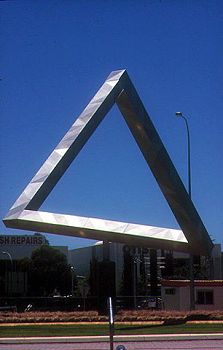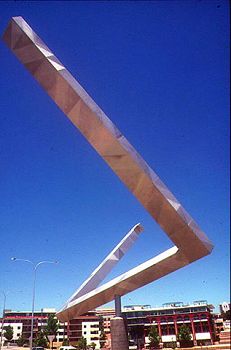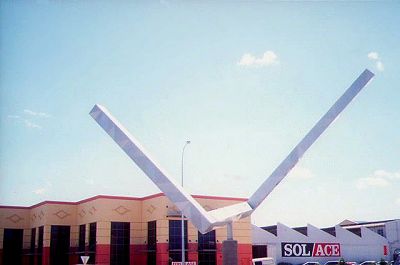Here's our weekly roundup of the new products CNET reviewers liked most.
1. 2007 Porsche Boxster S 2dr Convertible (3.4L 6cyl 6M)

Editors' rating: 8.4
The good: The 295 horsepower six-cylinder engine in the 2007 Porsche Boxster S gives strong and usable power at any speed, with the handling and six-speed manual transmission equal to the spirited driving this car calls for.
The bad: The available CD changer mounts in the trunk, and satellite radio isn't available.
The bottom line: With its superior handling and power, the Porsche Boxster S begs to be driven hard. A full array of cabin electronics is available for navigation, music and cell phones, but this package could benefit from an in-dash CD changer.
2. Pioneer VSX-82TXS

Editors' rating: 8.3
The good: Pioneer's high-end 7.1-channel A/V receiver is tightly packed with a full range of top-notch features, including a Faroudja HD scaler that converts all analog video inputs to your choice of 480p, 720p or 1080i resolutions over the receiver's HDMI output. It offers three 1080p-capable HDMI inputs and highly accurate autosetup. The THX Select2 certified receiver is also XM-ready and--with the included connecting cable--offers iPod compatibility.
The bad: Densely packed menus will intimidate novices. Analog-to-digital video conversion has some issues which may bother discriminating videophiles.
The bottom line: With an extensive feature package, rock-solid build quality and awesome sound, the Pioneer Elite VSX-82TXS is a worthy combination of everything we expect in a high-end A/V receiver.
3. Niro 800

Editors' rating: 8.1
The good: Ingeniously designed "1.1" single speaker plus seriously potent subwoofer virtual surround home-theater system; compact digital amplifier; optional subwoofer amp boosts bass performance; simplified cable hookup.
The bad: Uninspired styling; no video switching or HDMI connectivity; you supply the DVD player.
The bottom line: Niro's home theater sound is in the top tier of virtual surround systems and is especially recommended for buyers who will be spending as much time listening to music as watching DVDs.
4. LG enV (VX9900)

Editors' rating: 8.0
The good: The LG enV offers an impressive feature set, an easy-to-use QWERTY keyboard and decent call quality.
The bad: The enV's streaming-video quality could be better, and the boxy design has its quirks. Also, its external display is small and not very useful.
The bottom line: The design still isn't perfect, but the LG enV is a high-quality messaging and multimedia cell phone.
5. V-moda Vibe

Editors' rating: 7.7
The good: The stylish V-moda Vibe headphones amplify the audio from the sound source, and they come with several fun or useful accessories. Overall sound quality is very good.
The bad: The V-moda Vibe headphones are a bit overpowering on the low-end; may be uncomfortable for some users.
The bottom line: The V-moda Vibe headphones are a great option for style-conscious bass-addicts looking for some worthy portable headphones.
6. Canon Pixma MP960

Editors' rating: 7.7
The good: Fast prints; high-quality text, graphics and photo prints; built-in duplexer; loads of image enhancement options; capable of batch negative/slide scans.
The bad: Scan quality needs to be improved; PictBridge port can't double as USB port; no built-in networking; expensive.
The bottom line: If you have the money to burn, the Canon Pixma MP960 is a great choice for photo hobbyists who need fast prints and great print quality. We prefer this model to its comparably priced competition.
7. Motorola Razr V3m (Sprint)

Editors' rating: 7.3
The good: The Sprint Motorola Razr V3m offers a trendy design, decent call quality and a notable list of features, including Bluetooth, a speakerphone and support for EV-DO networks. Its menu design and EV-DO offerings are superior to Verizon's Razr V3m.
The bad: The Sprint Motorola Razr V3m suffers from poor speakerphone quality, a low-resolution display and no analog roaming. The location of the memory card slot is poor, and the phone's interface was rather sluggish.
The bottom line: The Sprint Motorola Razr V3m offers a few differences from the Verizon Wireless Razr V3m, but overall, it's roughly the same as its competitor.
8. HP Pavilion m7690n Media Center TV PC

Editors' rating: 7.3
The good: Lowest-cost PC, desktop or otherwise, with an HD DVD or Blu-ray drive (in this case, HD DVD); strong configuration for playing HD movies also lends itself to gaming and Windows Vista; wireless networking included.
The bad: HD DVD player begs to be brought into the living room, but the midtower desktop design says otherwise; limited room for expansion; too many promotional shortcuts and icons on the desktop; no HDMI output, only dual-link DVI.
The bottom line: We'd rather see an HD DVD drive in a living room-style case, but if HP had to build it into a standard desktop, at least the Pavilion m7690n Media Center TV PC is powerful, and it's also affordable. It will play both high-definition movies and 3D games, and it's ready for Windows Vista--for less than $2,000. No other PC we know of can make that claim. If you're in the market for such a system, this is a steal.
9. Motorola Krzr K1m

Editors' rating: 7.3
The good: The Motorola Krzr K1m is downright sexy and offers Bluetooth, EV-DO support and good call quality.
The bad: The Motorola Krzr K1m suffers from metallic music quality, poor streaming videos and sluggish performance. Also, it offers a lower-resolution camera than on the GSM Krzr K1.
The bottom line: Although it's oh-so pretty, the Motorola Krzr K1m doesn't offer any new features. Plus, multimedia performance wasn't reliable.
10. Samsung SPH-M610

Editors' rating: 7.3
The good: The Samsung SPH-M610 has an attractive design, a fantastic internal display and admirable performance. It also offers a solid set of features, including Bluetooth, a 2-megapixel camera and EV-DO support.
The bad: The Samsung SPH-M610's volume was a tad low, its external display is too small, and it lacks stereo speakers. Also, the microSD card slot is in a bad location.
The bottom line: Despite some minor performance and design issues, the Samsung SPH-M610 is a strong addition to Sprint's lineup and a great choice for a slim phone.








 del.icio.us
del.icio.us digg
digg reddit
reddit technorati
technorati
 Global warming could push sea levels about 40 percent higher than current models predict, according to a study that takes a new approach to the calculation. Most sea level models predict changes based on what we know about how ice sheets melt and warmer waters expand. These models suggest that by 2100 sea level will be between 4 and 35 inches (9 and 88 centimeters) higher than it was in 1990.
Global warming could push sea levels about 40 percent higher than current models predict, according to a study that takes a new approach to the calculation. Most sea level models predict changes based on what we know about how ice sheets melt and warmer waters expand. These models suggest that by 2100 sea level will be between 4 and 35 inches (9 and 88 centimeters) higher than it was in 1990. 






















